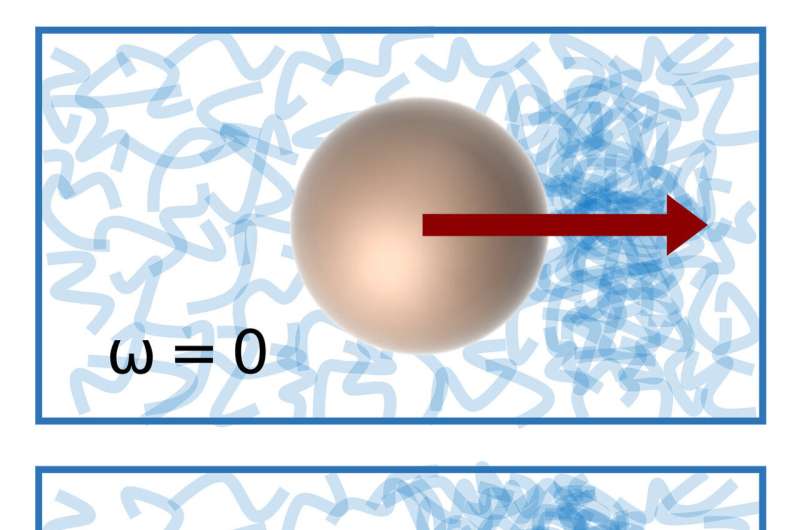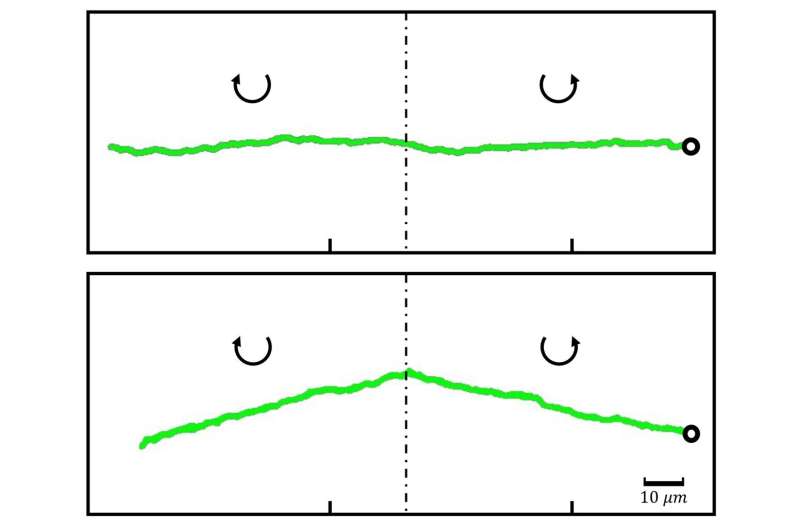This article has been reviewed according to Science X's editorial process and policies. Editors have highlighted the following attributes while ensuring the content's credibility:
fact-checked
peer-reviewed publication
trusted source
proofread
Memory-induced Magnus effect: Looking at the unexpected curveball in miniature

Whether you are familiar with the term "Magnus effect" or not, you have certainly seen it in action. It is when a spinning ball—for instance in football, cricket or baseball—bends away from its expected trajectory, often to the surprise of the opposing team. The principle also has engineering uses, for example to propel certain types of ships or aircraft using a "Flettner rotor."
Physicists have now demonstrated that the Magnus effect also exists at a microscopic level, where its effects can become really significant under certain conditions. A team at the University of Konstanz discovered this through experimentation and a team at the University of Göttingen have been able to explain the science behind it.
These findings could be used to develop new mechanisms to move and precisely control microscopic particles. Another potential application could be mini-robots that move through the bloodstream and target specific places in the body. The results were published in Nature Physics.
The Magnus effect can usually be observed whenever a rotating object moves through air or a liquid. The rotation deforms the flow in the surrounding medium in such a way that differences in velocity occur on the opposite sides of the object. This results in a force that deflects the object from a straight path of motion. The effect becomes smaller and smaller as the size of the object decreases. For spheres which are only a few thousandths of a millimeter in diameter, it should disappear almost entirely.

However, in their experiments at the University of Konstanz, the researchers noticed an unexpectedly large Magnus effect in miniature magnetic glass spheres that were made to rotate using a rotating magnetic field and moved at a constant speed through a viscoelastic fluid. Unlike water, viscoelastic fluids such as blood or polymer solutions combine both fluid and elastic properties. They behave similarly to bread dough, which slowly moves back to its original shape after a quick prod: they react to change with a delay.
Dr. Debankur Das and Professor Matthias Krüger from the Institute for Theoretical Physics at the University of Göttingen developed a model to reveal that it is precisely this delay that is responsible for the Magnus effect at a microscopic level: the surrounding viscoelastic fluid does not follow the rotating sphere immediately and is thus distorted.
The distortion rotates with the sphere, pushing it to the side, so that rotation and translation are coupled. The delay is also notable when the rotation stops abruptly: unlike with a sports ball in the air, the Magnus effect does not disappear immediately in miniature spheres in viscoelastic fluids, but lingers for a few seconds.
Krüger explains, "That was the key to us understanding what is really going on. Our model predicted the after-effect. When we could read this from the experimental data, the mystery of the Magnus effect at a microscopic level was explained."
More information: Xin Cao et al, Memory-induced Magnus effect, Nature Physics (2023). DOI: 10.1038/s41567-023-02213-1
Journal information: Nature Physics
Provided by University of Göttingen





















